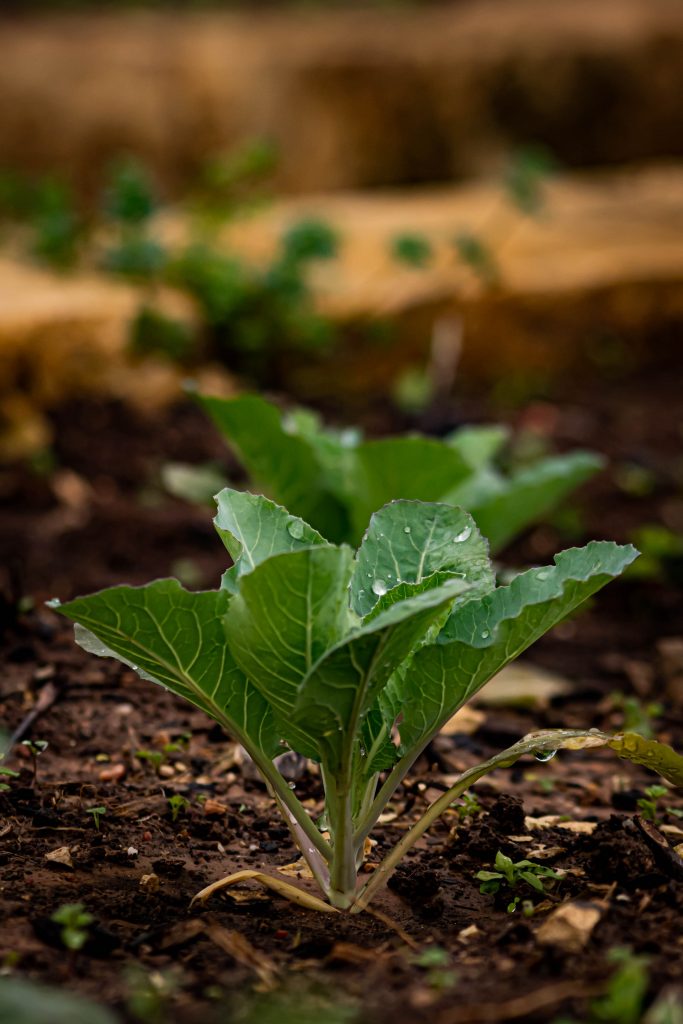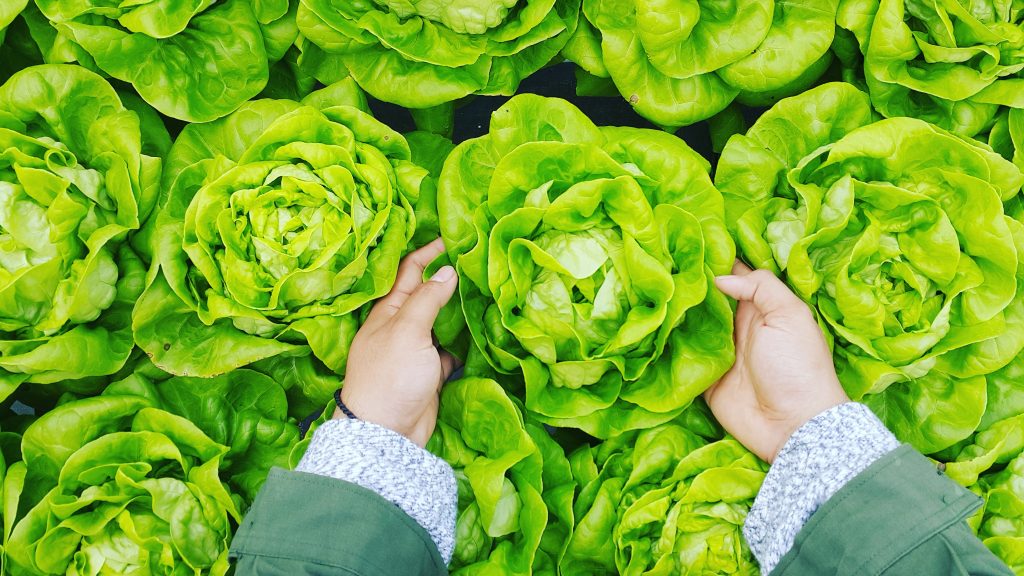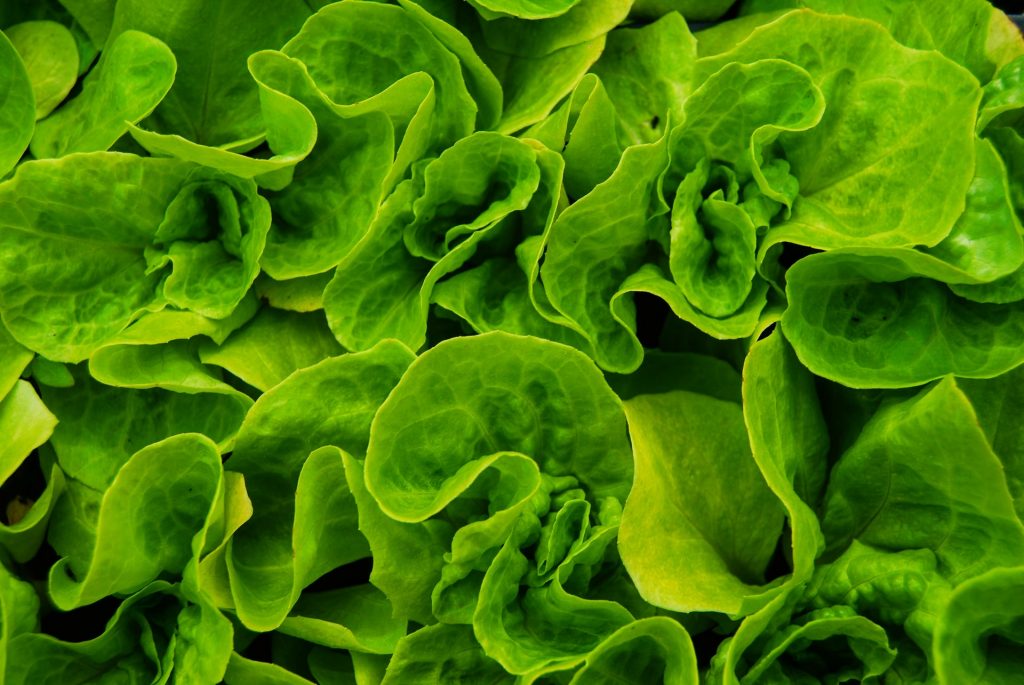Lettuce is a daisy-like annual plant in the Asteraceae family. It is commonly grown as a leaf vegetable, although its stem and seeds are also harvested. Lettuce is most widely associated with salads, although it can also be found in soups, sandwiches, and wraps; it can also be grilled. It contains fibre, iron, folate, and vitamin C. Lettuce also includes several other health-promoting bioactive chemicals. The bioactive chemicals in lettuce have been proven to have anti-inflammatory, cholesterol-lowering, and anti-diabetic properties in vitro and animal investigations.

Growing Lettuce Indoors
Table of Contents
1. Select the best location to grow lettuce indoor- Go through your living space to determine suitable spots where sunlight ideally reflects a plant. For lettuce, a south-facing window is best. Even better, a south-facing bay window. If you don’t have enough light on windows, try to grow your crop under proper lights. Try to choose a location that must also be safe for the lettuce. Pick a suitable area for active heat sources and cold drafts and inaccessible to mischievous, hungry pets.
2. Choose a container, growing medium, and seeds– Containers that are flat and relatively shallow with sufficient drainage are ideal. 4 – 6 inch plastic pots or a multi-cell seed-starting device are more alternatives. You can also recycle produce containers or take-out containers, which come with clear coverings useful for seed starting. Wash them thoroughly and pierce a few drainage holes in the bottom. Choose a seed-starting-specific planting mix, such as Seed Starting Mix, for the soil. Garden soil or “potting soil,” typically too gritty for seed starting, should not be used. When it comes to seed kinds, some are better suited to indoor cultivation than others. Baby Oakleaf, Tom Thumb, and Black-Seeded Simpson are loose-leaf cultivars to look for. For example, Arctic King, Winter Marvel, and Winter Density are known to thrive well in winter light. Other salad bowl favourites, such as spinach and arugula, can also be grown. Head lettuces are tough to grow indoors, so avoid them.
3. Plant and wait for the results– Moistening of soil for preparation is a good idea for planting, then fill containers with about some of a prepared mix. Scatter seeds on top of the compound or arrange seeds in rows; try to keep them about an inch apart. You have to cover the bases in a skinny layer of planting mix. If you’re using a multicellular seed starting system, plant three or four seeds in each cell. Just place your containers in a warm location on a small tray to collect excess water. For maintaining moisture, cover them loosely with plastic wrap or a lid. Check daily for signs of sprouts. Once sprouts start to appear, remove the cover and thin the seedlings, so they’re about an inch apart. Scissors are used for this task. Keep the seedlings moist but not overwatered.
4. Monitor growth of the lettuce and make adjustments– Lettuces are delicate plants that require special care when cultivated indoors. Your seedlings should be green and robust; light-starved plants are leggy and yellowed. Start feeding your tiny plants with a whenever they get their first pair of genuine leaves. Make sure your seedlings are moist but not saturated by keeping an eye on the moisture level. It’s simple to keep your lettuce wet with a seed-starting system that includes a wicking pad and a water reservoir.
5. Harvesting of lettuce indoors-Indoor baby lettuce should be around 4″ inches tall and ready to harvest in three to four weeks. Cut only what you need because lettuce is perishable. Trim each leaf at the plant’s base, about an inch from the earth, starting with the outer leaves. Allow the leftover leaves to continue to grow for a few more days. Plant a new set of seeds after the harvest is over.

Can I Grow Lettuce?
Gardeners can choose from a wide selection of lettuces that are simple to grow, provide a lot of food in a small amount of space, and are nearly pest and disease-free. Lettuce is one of the more “low-maintenance” crops. It’s best to choose a location where the soil drains appropriately while retaining enough moisture for maximum lettuce output. The most straightforward approach to achieve this is to work in enough organic matter (compost, rotting manure, or leaf mould) to loosen and enrich the soil. A pH of 6.0 to 6.8 is ideal. It is feasible to have lettuce in your garden throughout the growing season if you choose the correct types.
Should I Grow Lettuce Plants Or Seeds?
Lettuce may be started indoors for early transplants or seeded directly in the garden because it is easy to grow. If you want to get the most out of your time, you should do both—plant lettuce seeds indoors in peat pots a few weeks before your area’s last frost date. Allow enough sunlight to reach the seedlings or keep them under artificial illumination until they’re ready to go into the garden. As soon as the soil can be handled in the spring, transplant the seedlings. If a hard freeze is expected, use a cloche or row cover to protect the seedlings. As the season advances, keep a few lettuce seedlings on hand to fill in any gaps in the garden.
Lettuce Growing Tips
To improve overall lettuce production, there are four techniques –
1. 1. Plant lettuce seeds in raised beds to increase yield. The raised beds heat considerably more quickly than the ground around them. In the spring, you should be able to get a head start, and in the fall, you should be able to harvest later.
2. 2. Plant lettuce around taller plants like broccoli, Brussels sprouts, peppers, and eggplants to make the most of limited garden space. The lettuce aids its neighbour by keeping the soil moist and cold and shading away weeds. As the plants grow higher, they provide much-needed shade for the lettuce as the days grow hotter.
3. 3. You can also plant lettuce seedlings indoors in late spring and early fall to fill in gaps in the garden as other crops are harvested.
4. Many varieties of lettuce are welcome additions to ornamental beds. For example, ‘Mighty Red Oak,’ ‘Sweet Red,’ and ‘Sierra Blush’ can quickly fill gaps in flowerbeds, adding splashes of red where needed.
